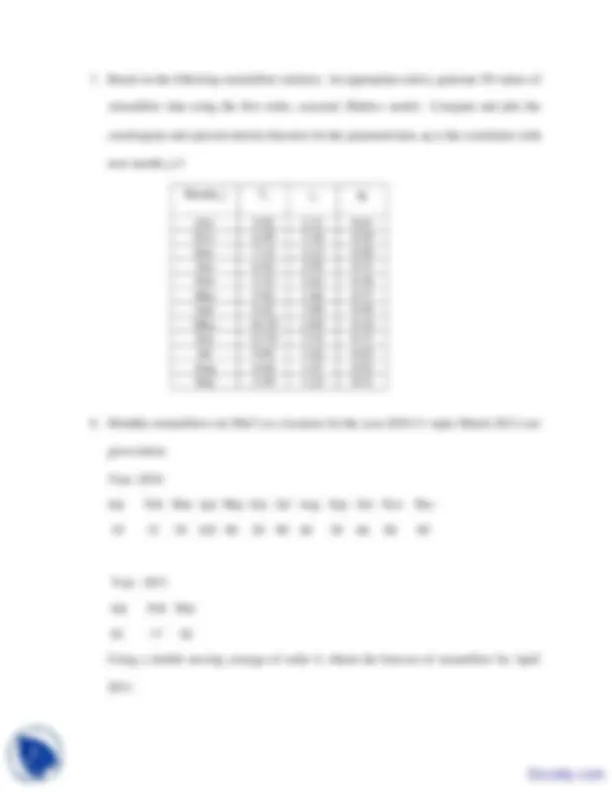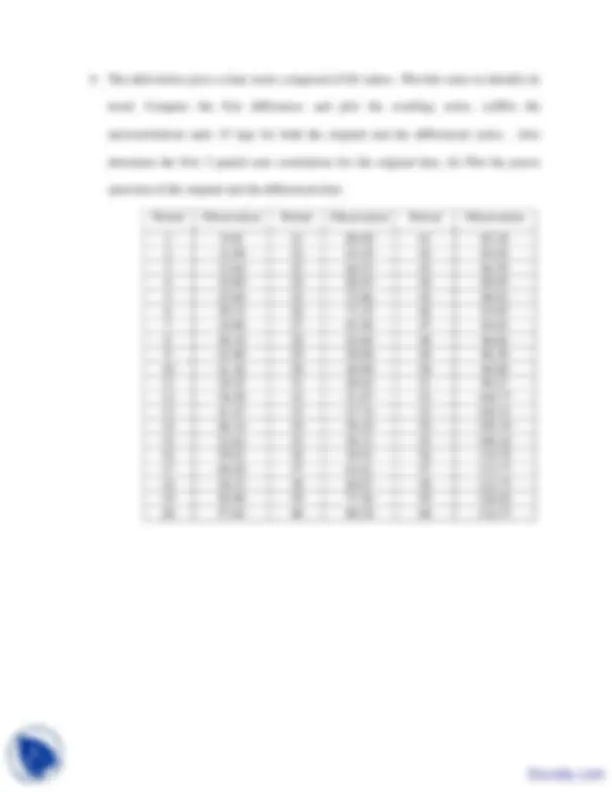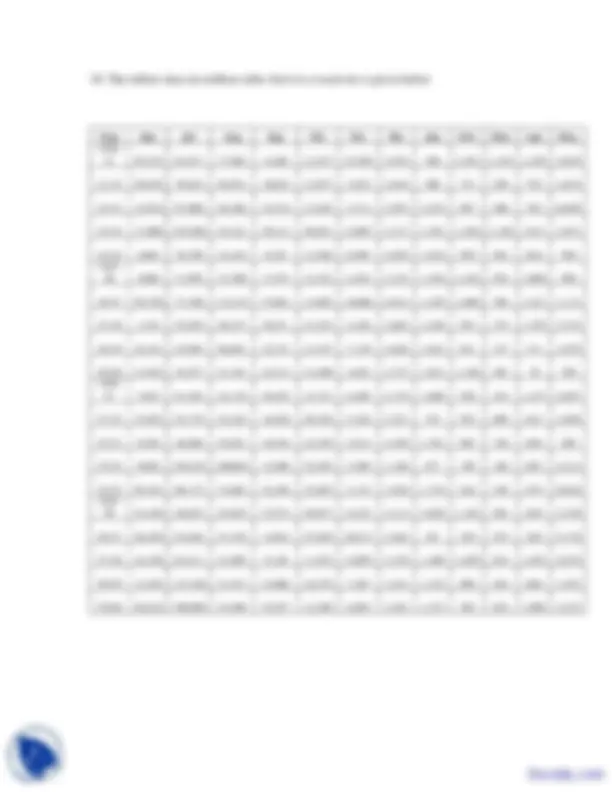





Study with the several resources on Docsity

Earn points by helping other students or get them with a premium plan


Prepare for your exams
Study with the several resources on Docsity

Earn points to download
Earn points by helping other students or get them with a premium plan
Community
Ask the community for help and clear up your study doubts
Discover the best universities in your country according to Docsity users
Free resources
Download our free guides on studying techniques, anxiety management strategies, and thesis advice from Docsity tutors
The main points discuss in the assignment are: Determine Autocorrelation, Confidence Level, Spectral Densities, Maximum Lag, Statistical Properties of Streamflow, Lag One Correlation, Correlation of Flows, First Order Markov Model, Yule Walker Equations
Typology: Exercises
1 / 6

This page cannot be seen from the preview
Don't miss anything!




___ ___________________________________ Season I Season II Season III
Mean 35 15 8 Std. Devaition 40 10 6 Lag one Correlation 0.43 0.67 0.
The lag one correlation is the correlation of flows with those of the previous season. Using a Non-stationary, First Order Markov Model, generate streamflow data for 3 years at the site. State the assumptions you make in using such a model.
Lag --->
-0.5 0 10 20 30 40 50 60 70 80 90 100
0
1 Partial Autocorrelogram
Partial Auto-correlation ---> Lag --->
(^00 1 2 3 4 5 6 )
2
4
6 x 10^8 Line Spectrum
w(k) --->
I --->
-0.5 20
0
1
Auto-correlation ---> 0 20 40 60 80 100
Correlogram
trend. Compute the first differences and plot the resulting series. (a)Plot the autocorrelations upto 15 lags for both the original and the differenced series. Also determine the first 3 partial auto correlations for the original data. (b) Plot the power spectrum of the original and the differenced data